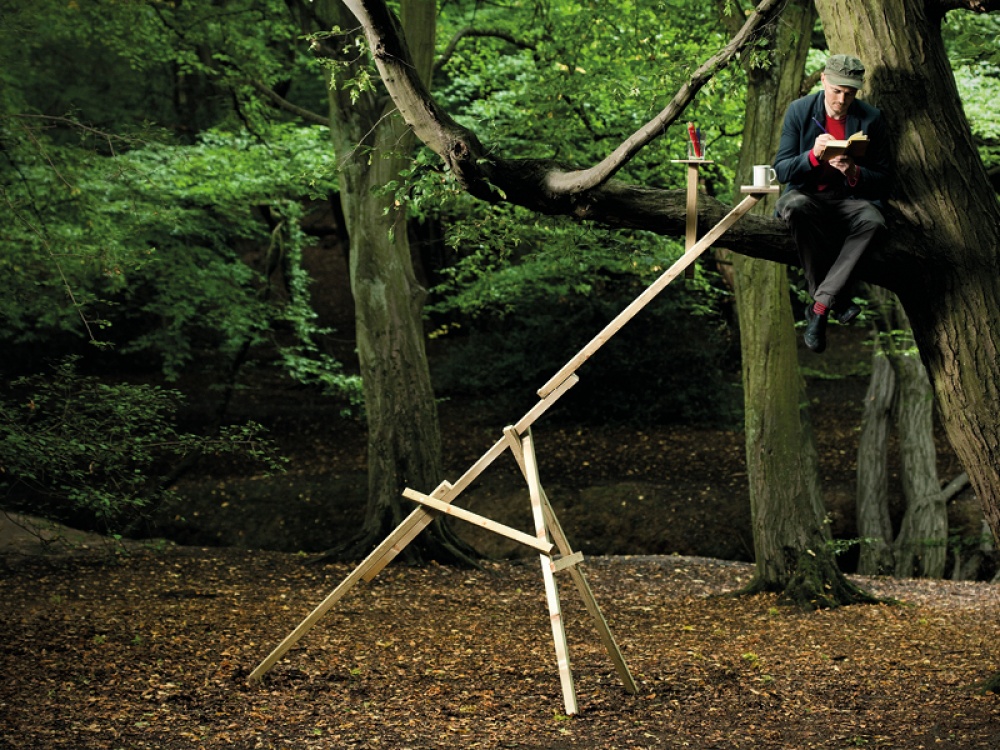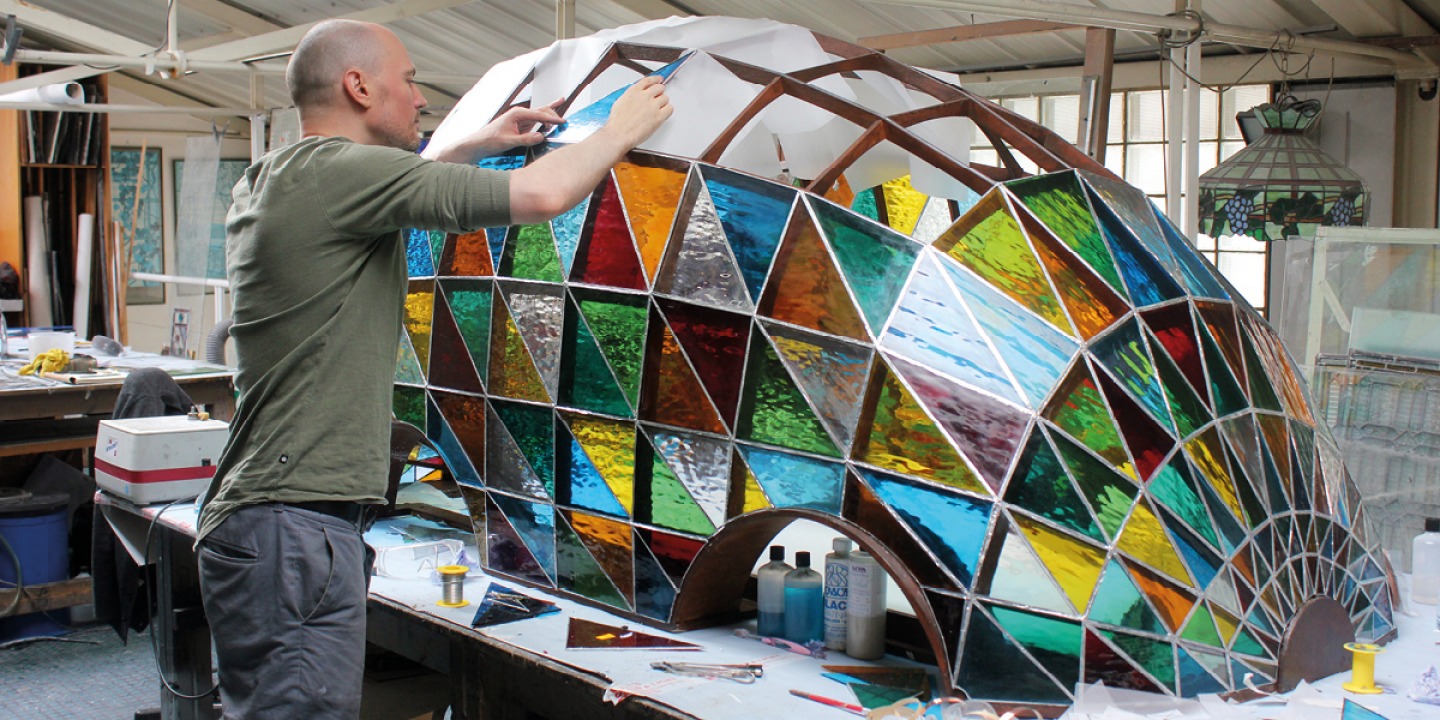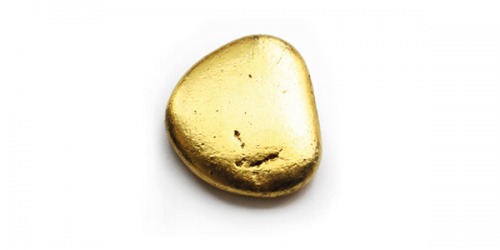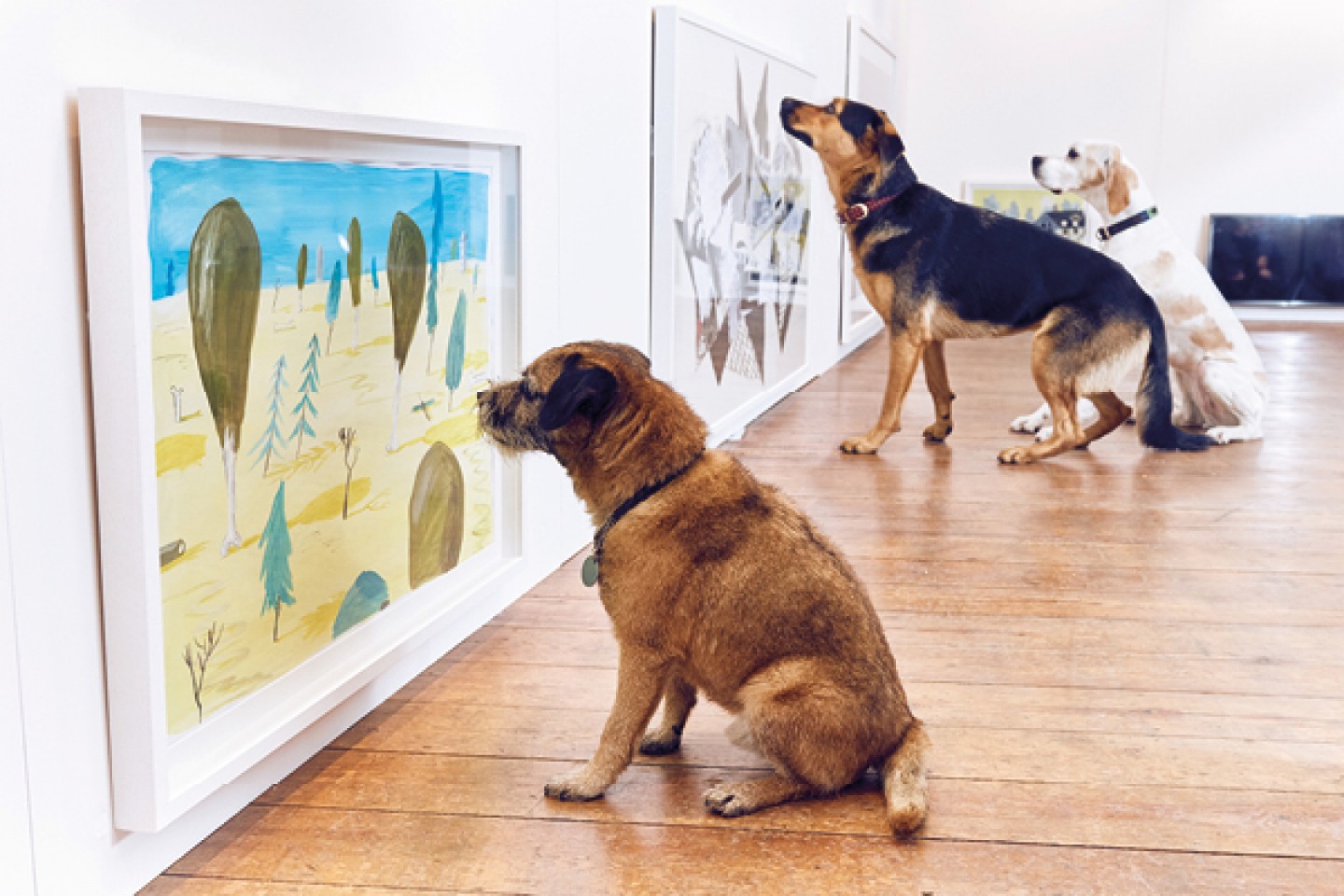Sunderland-Born Inventor Brings Local Children's Inventions to Life

A driverless stained glass car? A sentient spoon that gets more full with each bite of cereal? A pair of GPS shoes? An art exhibition for dogs?
Dominic Wilcox isn’t your typical artist, nor is he your typical inventor. He’s what happens when you take the madness of Salvador Dali and the unnecessary genius of Wallace (that’s Wallace as in the home-inventor from Wallace and Gromit, of course). He takes the mundane and the ordinary, twists it on its head, and reinvents it to see the world through a new lens. Sometimes these inventions are practical, sometimes they’re thought provoking, but they always come from a place of untethered imagination.
‘We’re all surrounded by mundane and typical things every day – a bed, a cup, a car. Whatever it is, I want to make life a bit more interesting,’ explains Dominic. ‘I try to create objects that infer a story. You can’t go into fine narrative details with objects – you have to communicate that narrative without words, which in a way is more challenging. This turns my objects into evidence of an imagined story – making them feel more real.’

A great example of how Dominic builds a story through objects is in his project titled ‘Luxury Skimming Stones’. These skimming stones were collected by Dominic from beaches, coated in gold leaf, and holstered in hand-cut leather pouches. Excessively luxurious and expensive for something designed to throw away, this object becomes a prompt for a bigger question – where does real value lie? In the monetary value of an object or the importance we give to it?
‘I imagine a story in my mind, then I create an object from that story to make the story real,’ Dominic explains. ‘The skimming stones discuss the concept of value without any written context. What is really valuable? Because there’s monetary value, but there’s also value in time and anticipation. This was based on a story I imagined of a person who carried around these skimming stones for 24 years, three months and two days, waiting for the perfect moment to throw his stones. This was eventually turned into a book,’ he continues. ‘That’s an object that asks more questions than it gives answers. When would you throw the stone?’

There’s also the incredible yet impractical watches designed by Dominic, which see static figures encased in specially-designed watch faces (with domes made by Sunderland’s National Glass Centre), which then rotate on the watch hands to create gif-like animations.
‘I’ve always loved the watch sculptures, in a way I could tell miniature stories with them. I called them “Moments in Time”,’ says Dominic. ‘My favourite is of two businessmen, one is standing on the minute hand and the other on the second hand. The second-hand businessman is circling the other man with his hand outstretched for a handshake, but the minute-hand businessman has his arms folded. Every time they pass each other you think, “I wonder if they’re going to shake now?”. It’s an endless loop of rejection,’ Dominic laughs.
Another wonder of Dominic’s vibrant world is the Driverless Stained Glass Car of the Future – a commission by car manufacturer Mini to envision the future of motoring.
‘Mini asked five artists for their personal vision of the future. Some created little models, one did an augmented reality windscreen display, but I was the only one who made a full-sized car,’ says Dominic. ‘I looked at the original Mini that was released in 1959, then imagined what that design would evolve to 100 years later. I proposed that in 2059 cars would be driverless, eliminating collisions. As there are no collisions, cars can be made from any material desired – I pushed that to its limit and made a stained glass car.
‘I was inspired by Durham Cathedral,’ he continues. ‘I visited it with my parents and when I looked up at the windows all I could think was, “why don’t we see this in modern, contemporary design?”. The car looks so nice when the light gets behind it. It’s since been in the Science Museum in London, it was in the Washington Arts Centre, and now it’s going to Paris.’



‘The skimming stones discuss the concept of value without any written context. What is really valuable? Because there’s monetary value, but there’s also value in time and anticipation’
There’s also the hilarious and adorable world’s first exhibition for dogs, complete with paintings that address canine issues (fire hydrants, postal workers, and the like) and interactive displays, including car windows for hanging heads out of. Most importantly though, Dominic is turning his head to the next generation of inventors – continuing his legacy of making little things a lot less dull.
‘Little Inventors started as a commission by a project in Sunderland called the Cultural Spring. I answered the call and pitched an idea to bring creativity to the community – getting children to come up with inventions that could then be made into real life things,’ he explains. ‘I did 19 workshops in Sunderland, collecting about 600 designs in total. I called out to local artists with different skills, we chose which ideas we thought were most interesting, and then the artists met up with the child who conceived it to make their ideas into reality. After an exhibition on Fawcett Street it suddenly went viral, even CNN International came. It was so successful that we’ve continued it ever since.’







